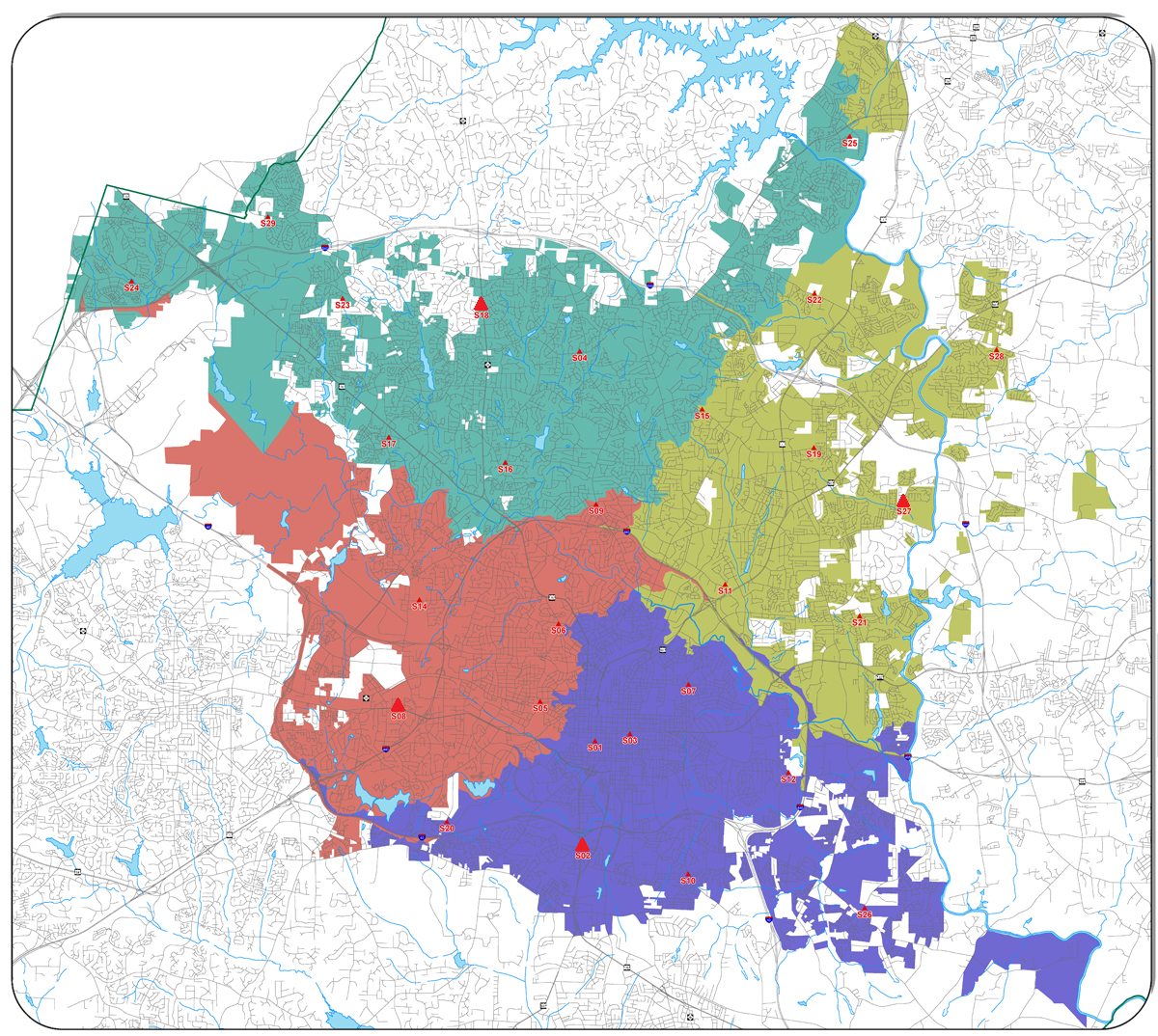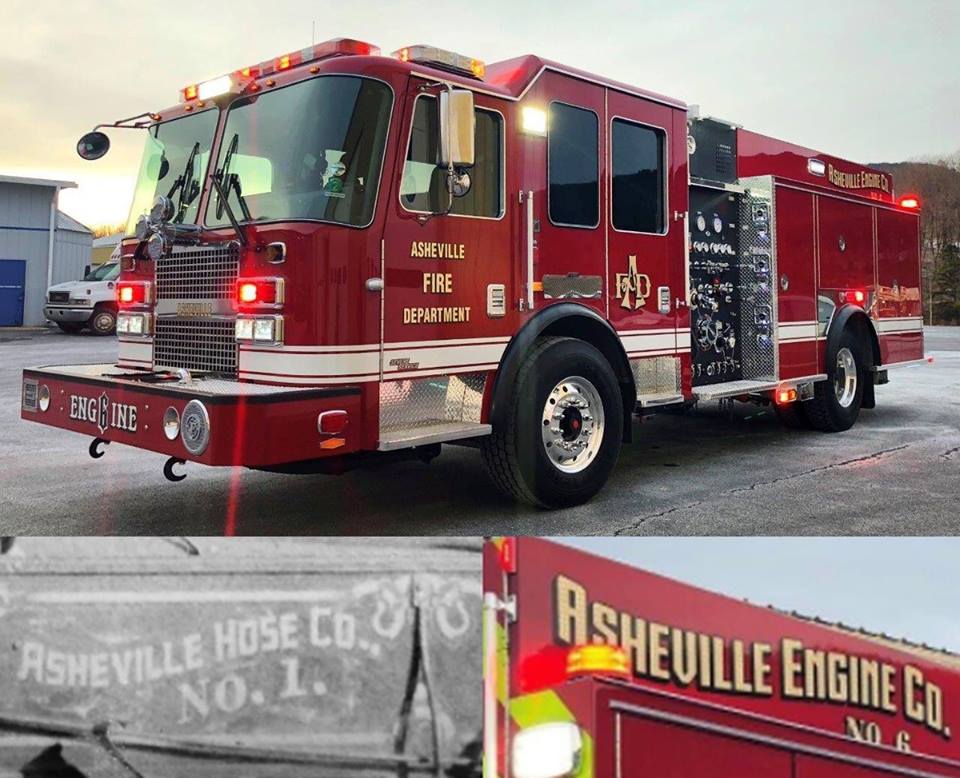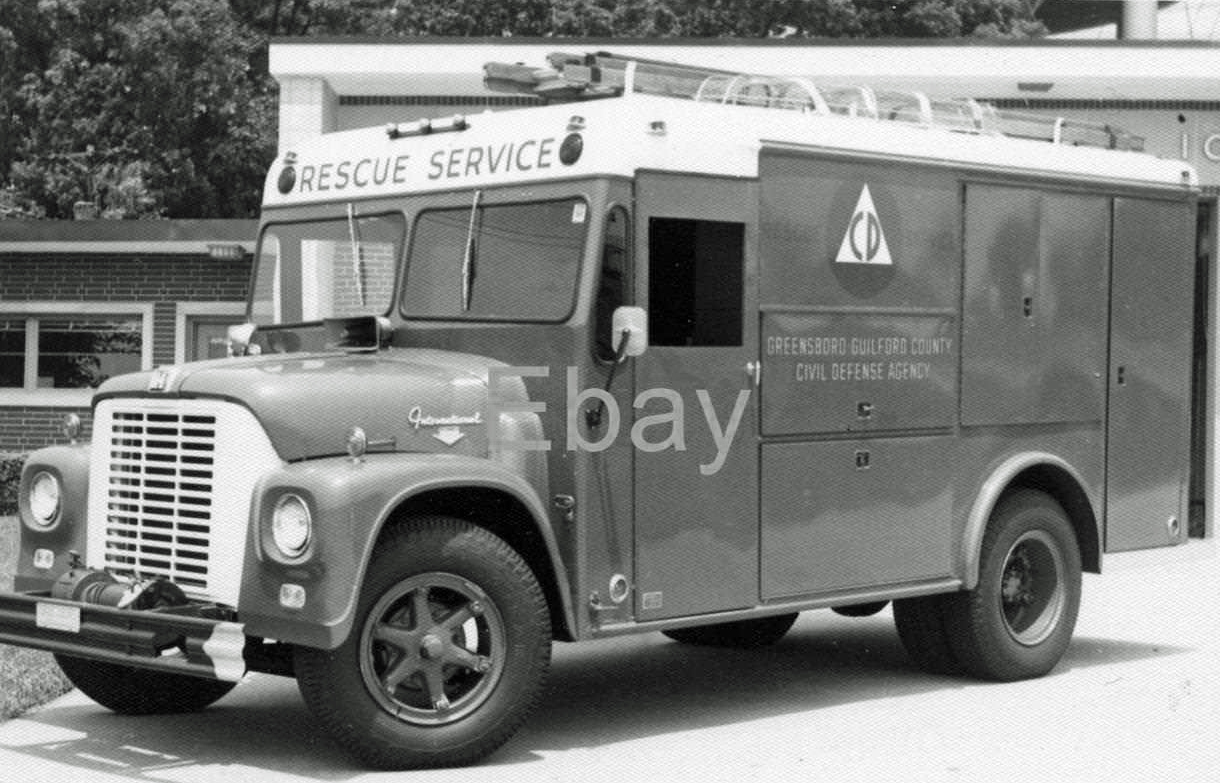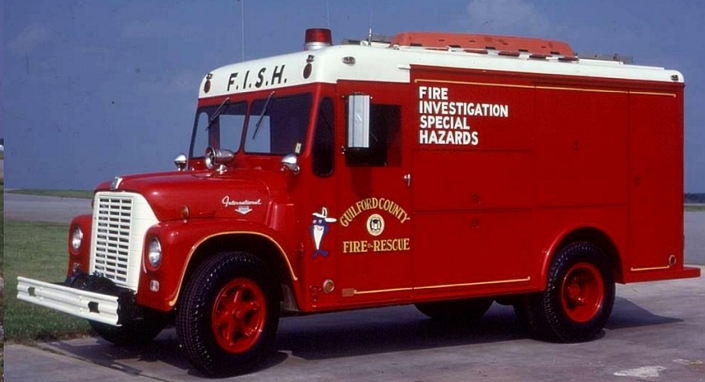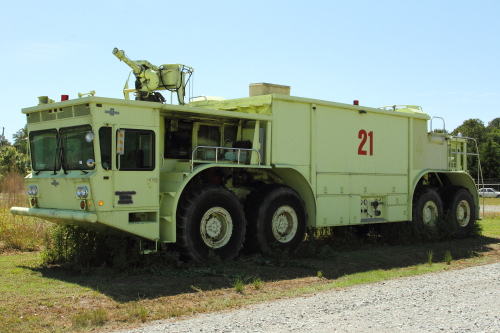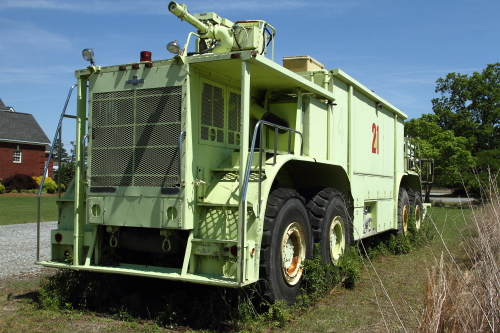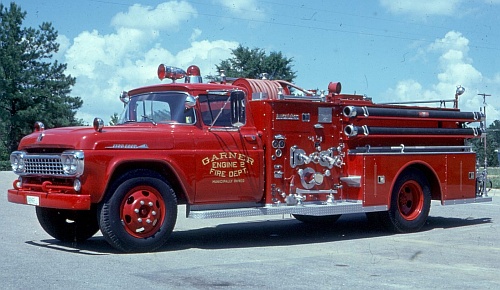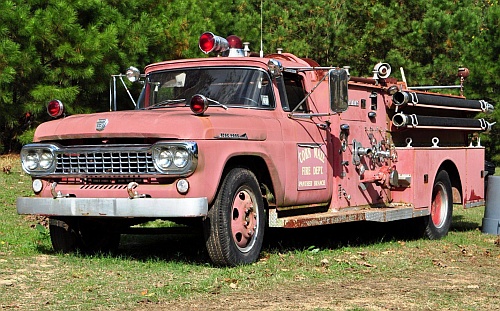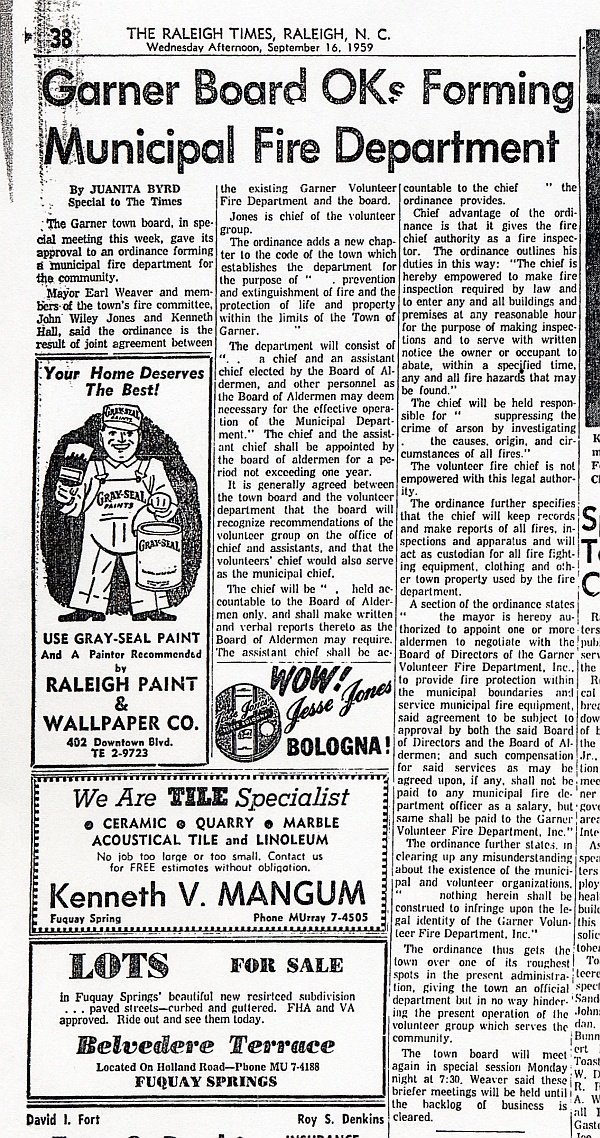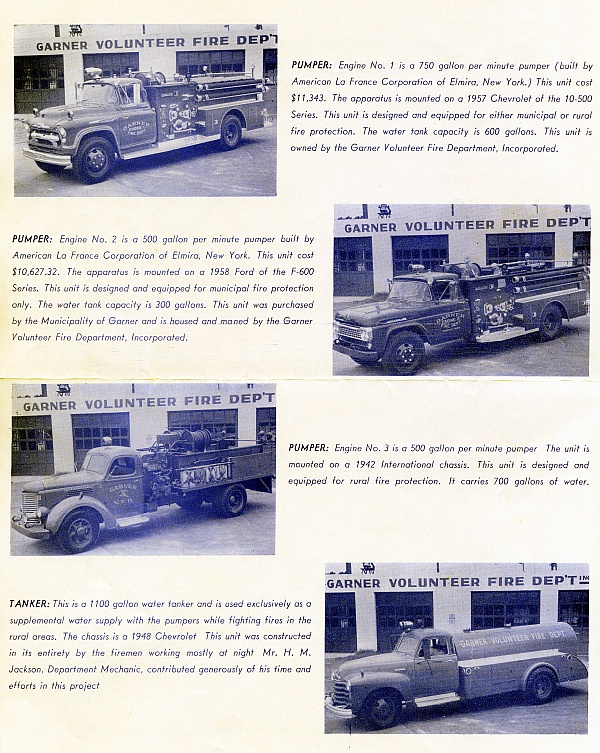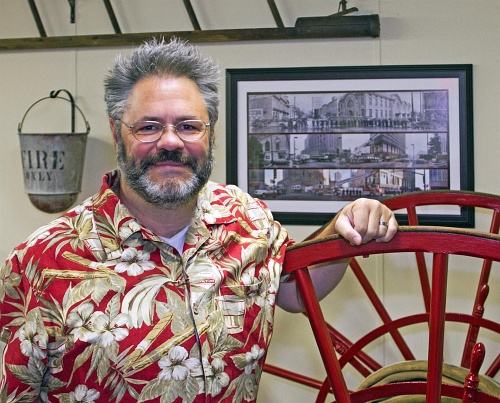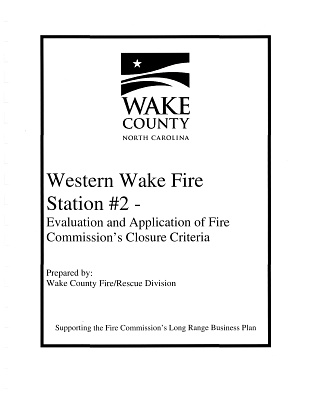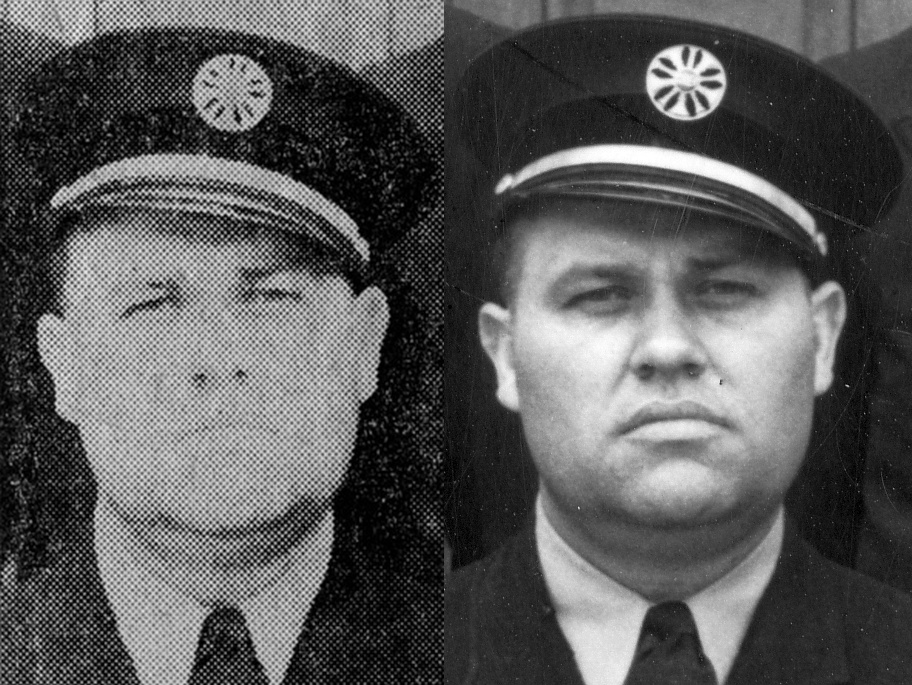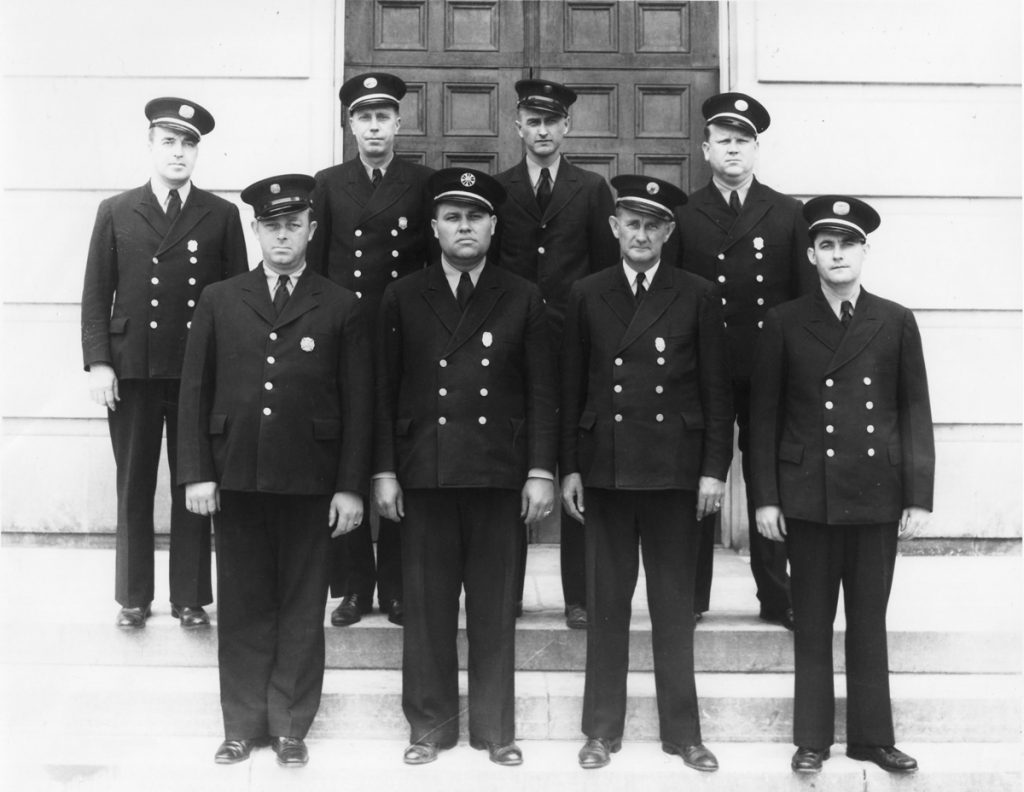This is a re-posting of a Blog Archives posting that is no longer available. It was originally posted on June 15, 2010.
Contents
- Introduction
- Reader Comments
- Postscript, 2018 – Kidd Brewer Kidnapped
Introduction
Question from a reader. While walking through the Blue Ridge Road area, he came across Homewood Banks Drive. There, he saw a small driveway leading up a hill. The land looked abandoned, but a mailbox read “Prime Only Steak House.” Walking to the top, he found abandoned parking lots and the remains of a burned structure. What was this building?
That was the Kidd Brewer house, built in 1956. As this Independent Weekly article recounts, the politician– who had been a Duke athlete and ASU football coach– made his mark in Raleigh when he bought 115 acres land outside the city, and near the intersection of Highway 70 and coming Raleigh Beltline. Overlooking the flood plain and future location of Crabtree Valley Mall, he built a house.
Click to view aerial photos from 1981 to 1999:
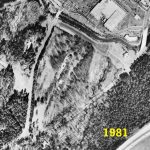
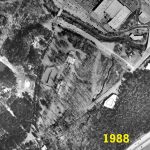

Tax records describe same as a one-story, wood-frame, stucco-on-mason structure with 8,826 square-feet. The house had two pools, one indoor and one outdoor. Brewer named the property Belle Acres.
Fast-forward a couple decades, and the building was turned into a restaurant. By 1982, at least as property sale records show. In 1989, in the month of May if memory serves, a certain blogger had his wedding reception (first wife) at the place. It was called Crossroads Restaurant. Perhaps readers can add additional history.
By the early 2000s, the place had closed. The road had also been named Homewood Banks Drive. What was it originally called? The restaurant last operated as It’s Prime Only. The abandoned structure burned on November 6, 2005. Units were dispatched just after 3:00 a.m. to another restaurant location above Crabtree Valley Mall. Engine 16 quickly confirmed the correct location, as they could see the flames from Lead Mine Road. Two alarms were struck.
Read an account of the incident on this Raleigh Fire Department timeline page. Below are a pair of pictures from Lee Wilson. Left is digital, right is film. Click to enlarge:
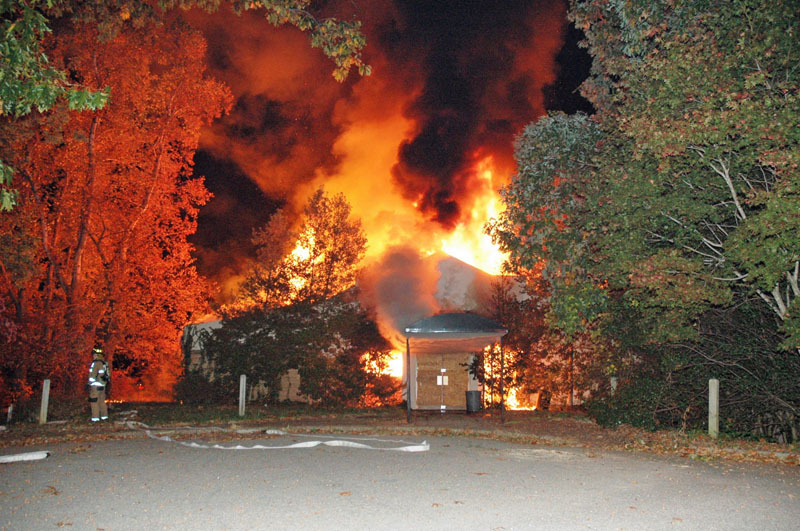
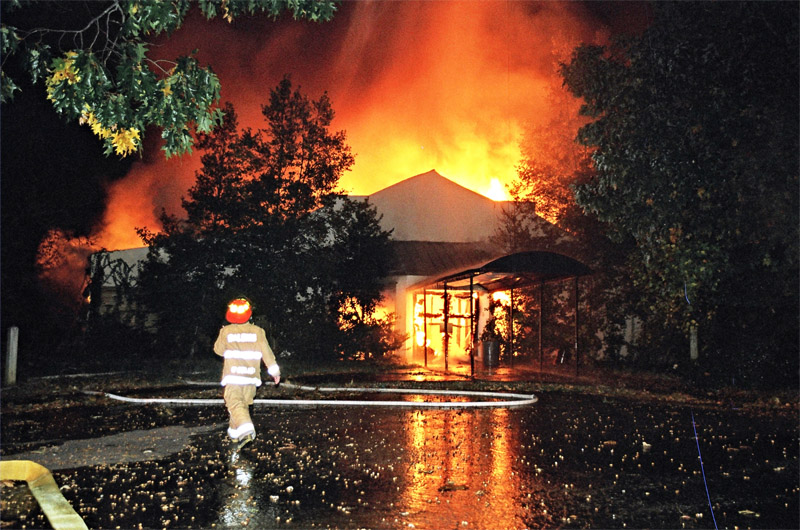 Lee Wilson photos
Lee Wilson photos
Reader Comments
Legeros – Somewhere in my stash are pictures of the inside of the restaurant in 1989. I am pretty sure that I took interiors, in addition to the reception pics. Maybe I can find them.
Legeros – About the house and its designer, http://www.trianglemodernisthouses.com/valand.htm
Marcus – Crabtree Mall Security called the fire in. All they could tell me was that it was the old steakhouse behind the mall. I thought they were talking about the one on the Creedmoor Rd side. I think it was the Steak and Ale.
A.C. Rich – I remember that one, responded as the RFD Safety Officer. Looked pretty impressive coming down Creedmoor Rd. It was a BIG fire for B-Shift and as I recall, the structure had become a popular hangout for vagrants. Naturally, the cause of the fire was oriented as such.
Buckwheat – Did that area have hydrants back then? Guessing so but if I recall wasn’t there a volunteer response from Six Forks, Fairgrounds,Durham Highway etc….?
Silver – I was leaving a friends house, coming down Lead Mine Rd. You want to talk about a frickin’ matchstick on the top of a hill!!
A.C. Rich – No vol response as it was in the city; and there were hydrants. It was fully involved upon arrival due to the time of day, 100% defensive attack.
Webster – Not picking on A.C. considering I’ve used it numerous times but seeing it in blog format made me question the phrase defensive attack. Isn’t that one of those oxymorons? Another term that the fire service created that makes since to us but would likely confuse others.
A.C. Rich – Hahaha! You’re right my anonymous friend! OK, I’ll try again… how about we squirted a lot of water from the yard!
Jason – Thanks for posting this! I was very curious as to what had happened there. Its a nice piece of land!
Donaldson – I remember when it was Crossroads Restaurant. I took a prom date there in 1989. I remember the night it burned. Dad and I had just finished a job at Six Forks Station and was listening to all of the sirens in the distance, when we rounded the curve on the beltline just before the Glenwood Ave exit, you could see the flames ext extending over the trees. It was quite impressive.
Debbie brewer – I was the grand niece of Kidd Brewer I visited my uncle and Aunt during June 1978. It was a beautiful house.
JP – The road was originally Edwards Mill Road. It ran from Blue Ridge to Creedmoor Road, following a path that is still seen with the greenway path on the side of Crabtree Valley Ave between Homewood Banks and Edwards Mill. Crabtree Valley Mall had two parking lots on the south side of the creek adjacent to the mall where the mall entrance met Edwards Mill Rd (currently Homewood Banks)
betty pettersen – I had never seen this website before and it’s so good to be able to find out a little more about the probably cause, etc. I wonder who owned the property at the time and why the drive wasn’t blocked off? I am Kidd’s oldest daughter, Betty, and have wonderful memories of the place…My daughter and I lived in the barn at one time. Is it still standing?
sherri – ms brewer, you must ensure your family’s legacy lives on. there is a magnificent book waiting to be written. was wondering what the linney family connection was, as i’m from hiddenite,nc and have many folks @ rest in linney’s grove.
Michael S, – I noticed the abandoned site with eight posts still standing while exploring Google maps today. Is it possible to get on the property for some photography?
stephen – I have lived in Raleigh all of my life and never even knew about this place until a few weeks ago while on Facebook. Piqued in curiosity and interested in Raleigh history, I ignored the private property signs and ventured forth onto the land. I imagined what I would do with this property if I could own it and then dismissing those dreams as merely that, dreams, I left being very impressed. I would love to now why the property has been abandoned and if anyone has any future plans for it.
Grace Hodgkins – I LOVED the Crossroads restaurant and that sexy view of Crabtree Valley. Took many dates there. Attended Jean Parrott’s wedding reception there in maybe the early 90s(??) I remember a guy I was dating did some work for Kidd Brewer, Jr. in the building behind the restaurant (almost like a barn with a living space above). This was in the months prior to his suicide, if I am not mistaken.
Nancy Webster – I remember the Kidd Brewer house atop the hill overlooking Crabtree River. I believe there was a pond where the mall is now. I think at one time, there may have been some cattle near the pond. All in all, it was a beautiful country scene. A lot more beautiful back then than it is now.
Bobby Campbell – Betty Pettersen We love to get in touch with you. We lived in the barn for the first nine months of our marriage. my mother and Mrs Brewer were first cousins. We also have so many memories of that house as well as all the Brewers. I saw an article about Mrs Brewer and Kiddo written for The News and Observer written by Charles Rose. it was framed and on the wall in the restaurant. Henry Johnson of Wilmington was the architect who changed the house into the restaurant. Someone is so right. The story of the Brewer family …especially Kidd Sr. Would make a wonderful story! About the house…..Kidd bought the property in the 1950s. They remolded the barn first and made an apartment in it. Then Kidd bought a bankrupt tile company, a bankrupt window glass company, a surplus government radio tower and other surplus building supplies and proceeded to build the house. The walls inside the house were chestnut…NOT wormy chestnut. The house had a sliding glass wall separating the living Room from the kitchen and den. There was a fish pond between the indoor pool and living room. This overflowed into a waterfall which went down into the downstairs den beside a rock fireplace. This downstairs den had wide stairs going up to the outdoor pool. This pool looked out over the land where the Crabtree Mall is today. Heaven knows we knew it flooded. There was a little lake down there where we used to have a car pull us around and around as we waterskied!, As you started up the driveway from Edwards Mill Road you passed a stable on the right and then the barn. On the left was the horse pasture. They had several horses. Then the road made a circular drive. This was coated with a special smooth which made it into a roller rink where you could skate. You entered the house into a glass Florida room beside the indoor pool. We put a steel cable from the outdoor pool 1800 feet to the highway. Then we built a two wheel cart with a t bar seat. It had a gasoline lawn mower engine. You could get on the t bar at the outdoor pool and freewheel ride all the way to the highway. then you crank the gasoline engine and rife back up to the pool. at the end of the ride at the highway three was a huge sigh that said YOU’LL BE GLAD YOU DID and we were.
Donna Potter – I so remember Kidd Jr. fondly. He dived with our small Raleigh dive group over a 10 year period. My ex and I divorced, and I moved to Virginia and after I moved back to Cary, Kidd and I did talk occasionally. He phoned me wanting to meet for lunch just a day or two before the suicide. I couldn’t meet for lunch, and always wonder what if, maybe he would have said what was going on with him, and maybe just maybe I could have helped him. I drive past Kidd’s Hill going to work every day and think of Kidd every day. There are so many goI’d memories of Kidd Jr., me, Larry Nunnery, Bobby Moore, Harold Quidley (my ex), and Hog Doc or Larry Tarlton on the Whipsaw with Capt. Ed Wolf heading out to sea for 10 years for another fantastic dives and snorkeling in between dives on the WR-4 John D Gill WW2 Tanker wreck 30 miles offshore. I have a great photo silhouette Harold took of me and Kidd snorkeling over that wreck I treasure. That’s how I remember him, plus how he would protect Harold and I from sharks while we did photography on the wreck. I love you Kidd!
AnnaLee Hammon – My step-mom and daughter Lennie Brewer were friends. We used to go swimming at the Brewer house. It was such a beautiful home! She lived in the barn for a while also.
Vicky Martin Langley – i would love to be in touch with Betty. LeRoy Martin, my father, and Kidd were great friends. I have such fond memories of all the family.
David Harris – I served in a management capacity at the Crossroads until it was changed into an upscale French Restaurant called La Ber de Sav wa or something along those lines. I new the concept would fail lasting 6 months. How do you fill a 225 seat restaurant with high end french food in Raleigh? LOL. I very much enjoyed the 2-3 years I spent, the holidays were wonderful with large parties every night, wine on every table and smiles everywhere including the staff. I walked the burnt ruins a few years ago and traced my steps on what was left of the tile kitchen, eerie, quite, and sad sums it up pretty much. I drove by today by chance and noticed major changes taking place, finally leveling it off with new construction on the way. I will not forget all the friends and good times I had there. Funny, I still have two bottles of uncorked house wine with the Crossroads label on them I’ve kept over the years for a keep sake, why, I have now idea.
Legeros – For those following this long-percolating thread, the building appears to have been lately demolished, and the property being turned into something new, http: //www.legeros.com/ralwake/photos/weblog/images/2013-08-17-cv.jpg
David Harris – I thought I would share this picture of one of two possible last remaining bottles. It’s old White Zinfandel which was produced by Round Hill for the Crossroads private label. Probably not to tasty at this point. No worries, not spam, just history. https://i.imgur.com/2lgT3k6.jpg
Ben – http://www.bizjournals.com/triangle/blog/2013/07/crabtree-area-mixed-use-project.html It’s really sad to see ALL the trees razed from the area surrounding the Brewer house. They left some standing on the east side of it at least. Anyway, just wanted to let everyone here know how cool it is to read all these posts about the history of this spot, especially from Brewer family members and friends, and how sad and strange it is to drive by it now in its current state with no trees whatsoever.
BEBE JOHNS FOX – I am 76….yikes! born in Chapel Hill. Kidd Brewer Sr.’s wife Frankie and my Mother were good friends. SOMEWHERE I have a photo of them shopping in Durham.My father was in WW II and after he came home Frankie and Kidd invited us to their new house for dinner…so cool with a tree growing out of the roof. Their children were a few years younger than my sister and me. Was the boy called KIDD Jr. back then…really cute little fellow, and his sister and I were introduced as her name as Olivia. As I recall her middle name came from fer mother’s middle name…Linnie or similar, from BOONE I THINK, and her brother was actally named PIERCE SOMETHING BREWER. Kidd, Sr. went to Reynolds High School here in Winston Salem and I think he was there when his football ability was noted by Duke. Does anyone know where the BREWER FARM WAS HERE IN WINSTON SALEM…I think/guess it was where ARDMORE, a dev. which began a bit after WWII was over. It was a reasonable place for the soldiers back then but now mch more expensive as between both of Winston’s large hospitals. I have another little story if anyone is interested!
TJ – Mike, this has to be one of your longest running blog posts, very cool and interesting reading!
Donna Potter – Kidd Jr.’s name was Pierce Oliver Brewer. We called him Capt. Kidd.
Rob – Moved from Raleigh in 1969 and didn’t hear anything of Kidd until the Abyss came out then his subsequent death. Fondly remember Kidd, and his Cobra was the hottest car in Raleigh until another of Kidd’s friends got a Shelby 500. Remember the You’ll Be Glad You Did billboard on the highway.
Denise Stevenson – Homewood Banks Drive was originally Edwards Mill Road!
Postscript, 2018 – Kidd Brewer Kidnapped
Found this Raleigh Times article recently, related to the man. January 22, 1962.
Wow!
Click to enlarge:
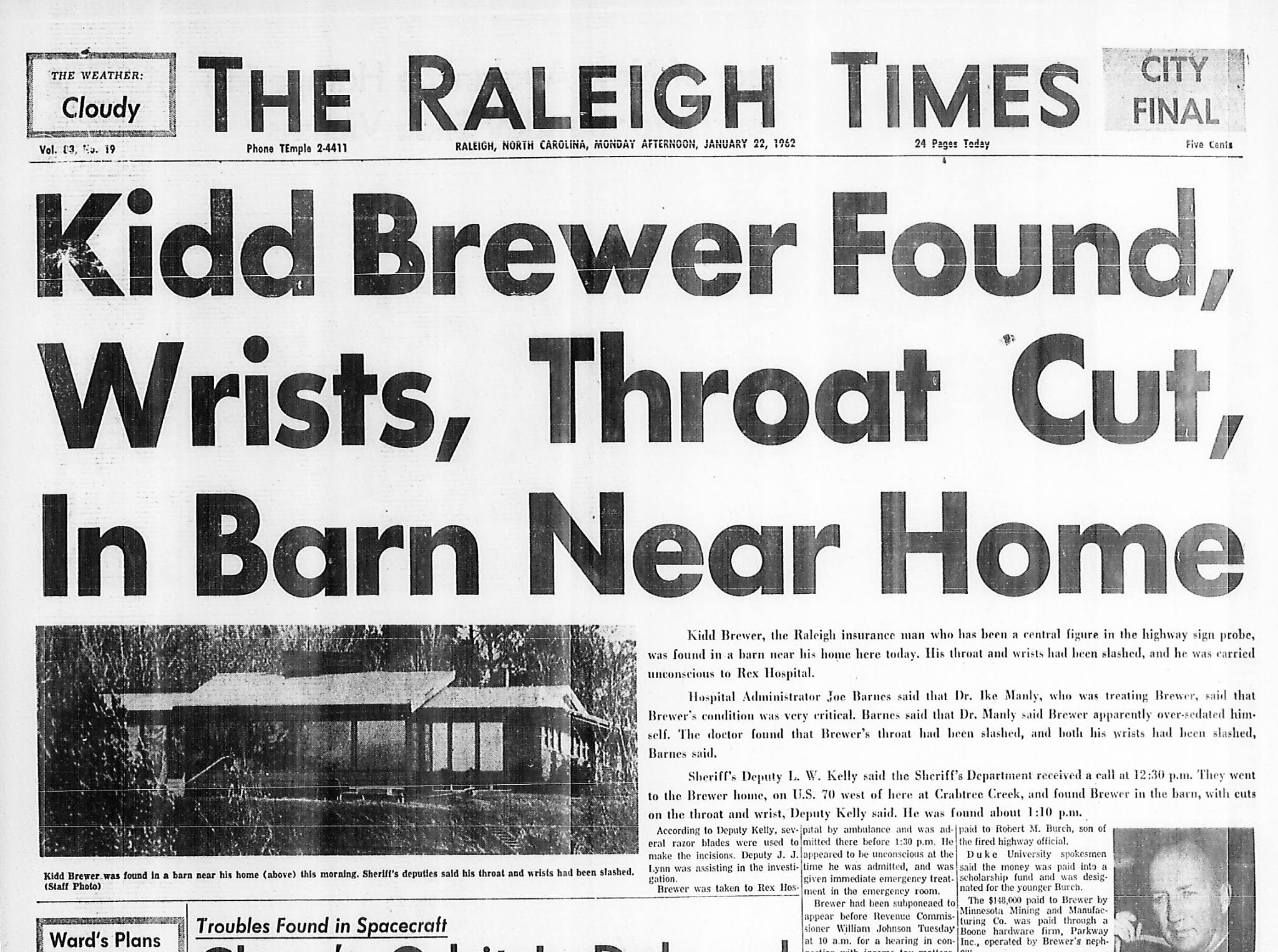
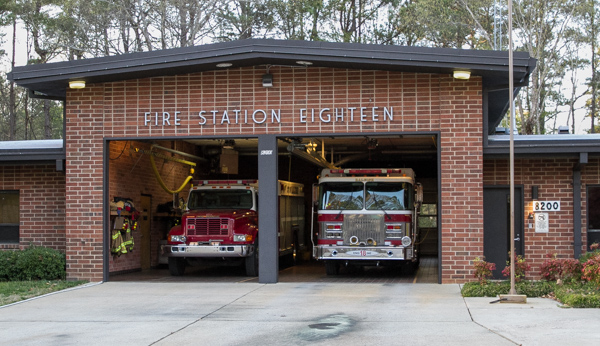
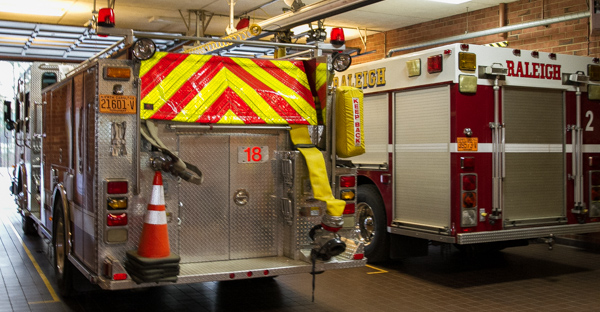 Engine 18 and Haz-Mat 5.
Engine 18 and Haz-Mat 5.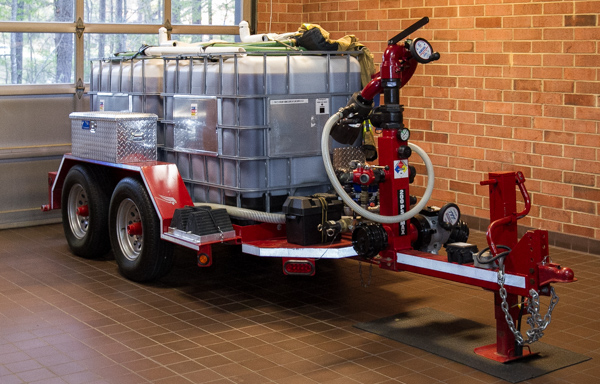 Foam trailer at Station 18
Foam trailer at Station 18